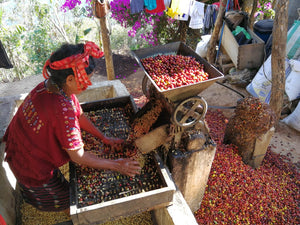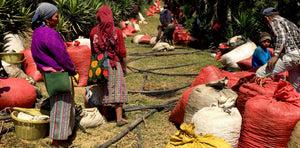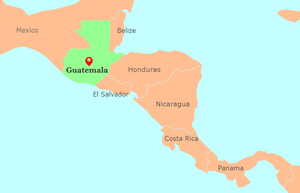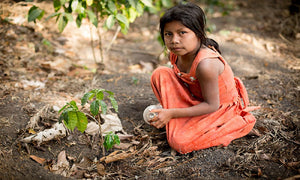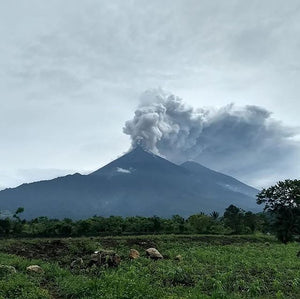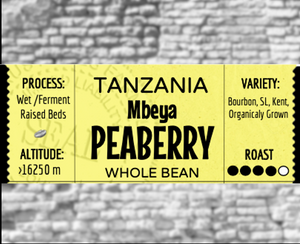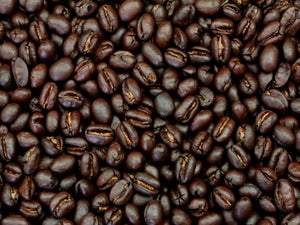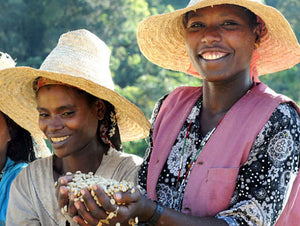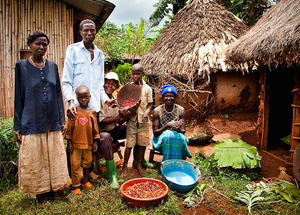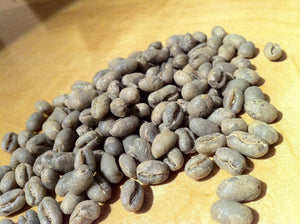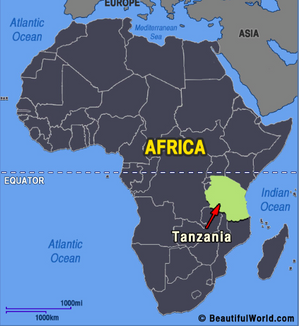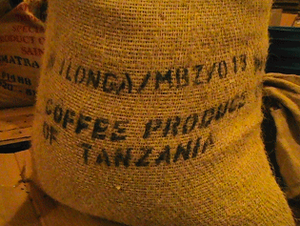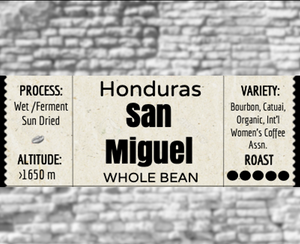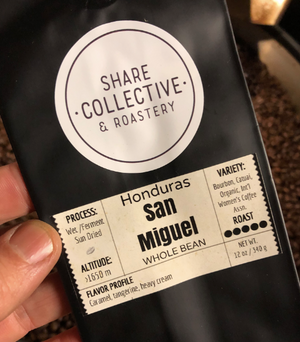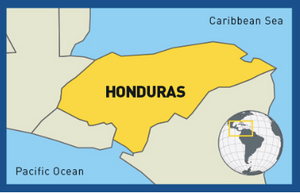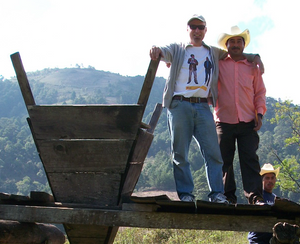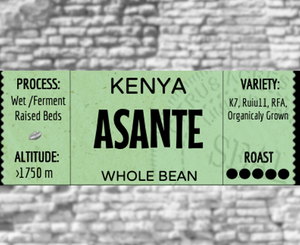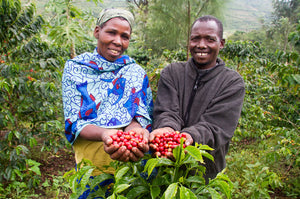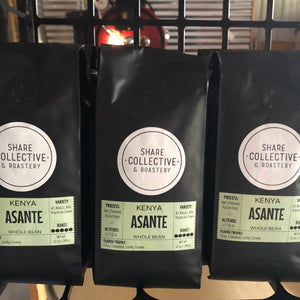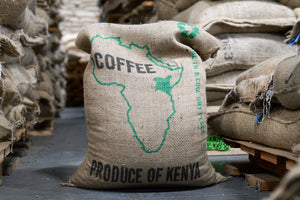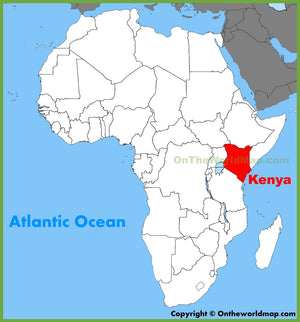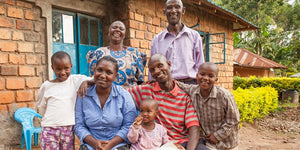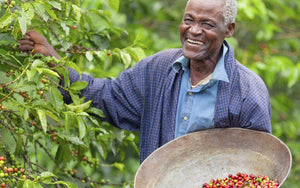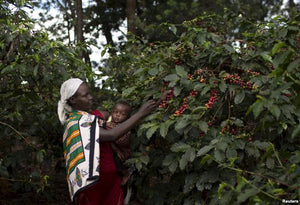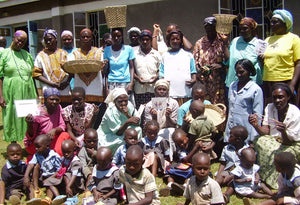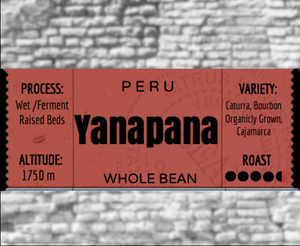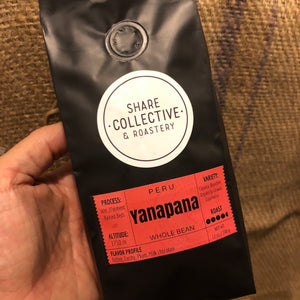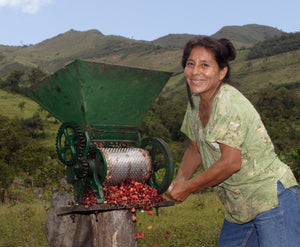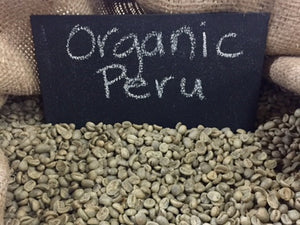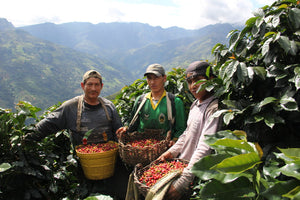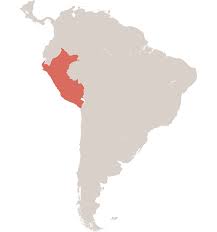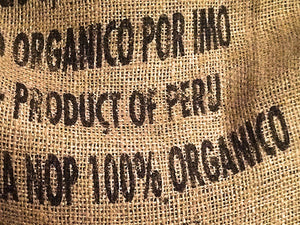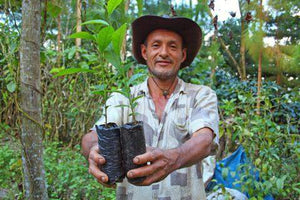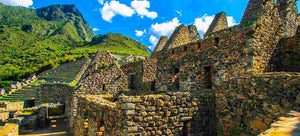
Every bean from various origins "behave" uniquely in the roaster. The higher the altitude the beans are grown, the more dense the bean. Dense beans do not react to the heat as quickly as lower altitude, less dense beans, therefore can achieve more variety of flavors without charring. Described below is a generalization for this roasting level.
The "Share Collective" Roasting Process:
Small batch roasted, our dark roasts are introduced into the roaster drum at 330 degrees F. This begins an endothermic process, fancy term for describing the absorption of energy.
As they warm, the beans begin to brown. The drum temperature is increased to 385 degrees F where carbohydrates begin to caramelize. The beans expand, bringing the "first crack" and the loss of moisture along with several layers of the papery hull.
The drum then is quickly taken to 410 degrees F which initiates an exothermic reaction. The beans at this point double in size, losing more of its papery hull, resulting in the second crack.
Our dark roasts exit the drum during this second crack to cool rapidly. Most of the acidity has been lost, but most of the carbohydrates have caramelizing into sugars, giving this roast its characteristic sweetness. Carbon, at this point, begins to increase, which can cause bitterness. By ending the roast before the sugars are carbonized creates our characteristic very smooth, dark roast with little to no bitter aftertaste.
Guatemala Sabor Cremoso -Dark Roast
$ 17.99 – Sold Out
The ADISQUE coffee producers association consists of 164 families of mainly the Mayan ethnicity in the Chorti region near the Sierra de las Minas and...
View full product detailsTanzania Peaberry Full City Roast
$ 17.99 – Sold Out
Plum, raisin, milk chocolate, full body Single Origin (100% Tanzanian) Specialty Grade, +85 Roasted midway to second crack 12 oz Whole Bean package with one...
View full product detailsHonduras San Miguel Dark Roast
$ 17.99 – Sold Out
Flavor profile: Caramel, tangerine, heavy cream Genetics: Bourbon, Catuai Altitude: + 1,650 meters Whole Bean, Dark Roast From a tiny community nestled on the northern most...
View full product detailsKenya Asante - Dark Roast
$ 17.99 – Sold Out
Mt. Elgon Coffees tend to be more Ethiopia-like, with heavy grapefruit, florals, and a delicate tea-like quality.. Farmers bring their coffee cherries to the coffee...
View full product detailsPeru - Yanapana Dark Roast
$ 17.99 – Sold Out
This is an SHB EP grade coffee from Peru that is Fair Trade, Organic, and Rainforest Alliance certified. We love when we can find on...
View full product details